Sailing with my kids is the biggest fun for me as a skipper. Showing them the secrets of sailing, the physics of propulsion, essentially, how nature works, is something that makes me deeply satisfied and happy. Providing my kids with a base that stands for fun, action and adventure, but also acts like a vehicle that completely naturally educates them in so many ways is absolutely exciting and great. You have probably read the articles of this section, sailing with kids, and you know that from the start on I did have a “bigger plan” of how and why I´d do it. This weekend – another sunny, warm day – I was able to pull off the next level: Life jacket education.

Safety is always my biggest concern when I sail with kids and so everything connected with life jackets, Man overboard and general safety when sailing is part of my training. That Sunday the circumstances had been just perfect to do the next step: A live drill. In the end it was a great day of fun and excitement for the kids and here is how I did it, bringing them closer to being able to execute safety precautions aboard and having a great splash at once.
Sailing with Kids: My pedagogical concept
My idea is that these kids, in my case 8 and 6 years, are old enough to being able to take over some of the responsibility by their own. In this, the first step was to not equip my boat overly exaggerated with too much safety equipment. For example, I do not feature those reeling nets. I reckon they convey a false sense of safety. Instead, I invested in high quality automatic life jackets for some 300 Euros each and a proper life belt.
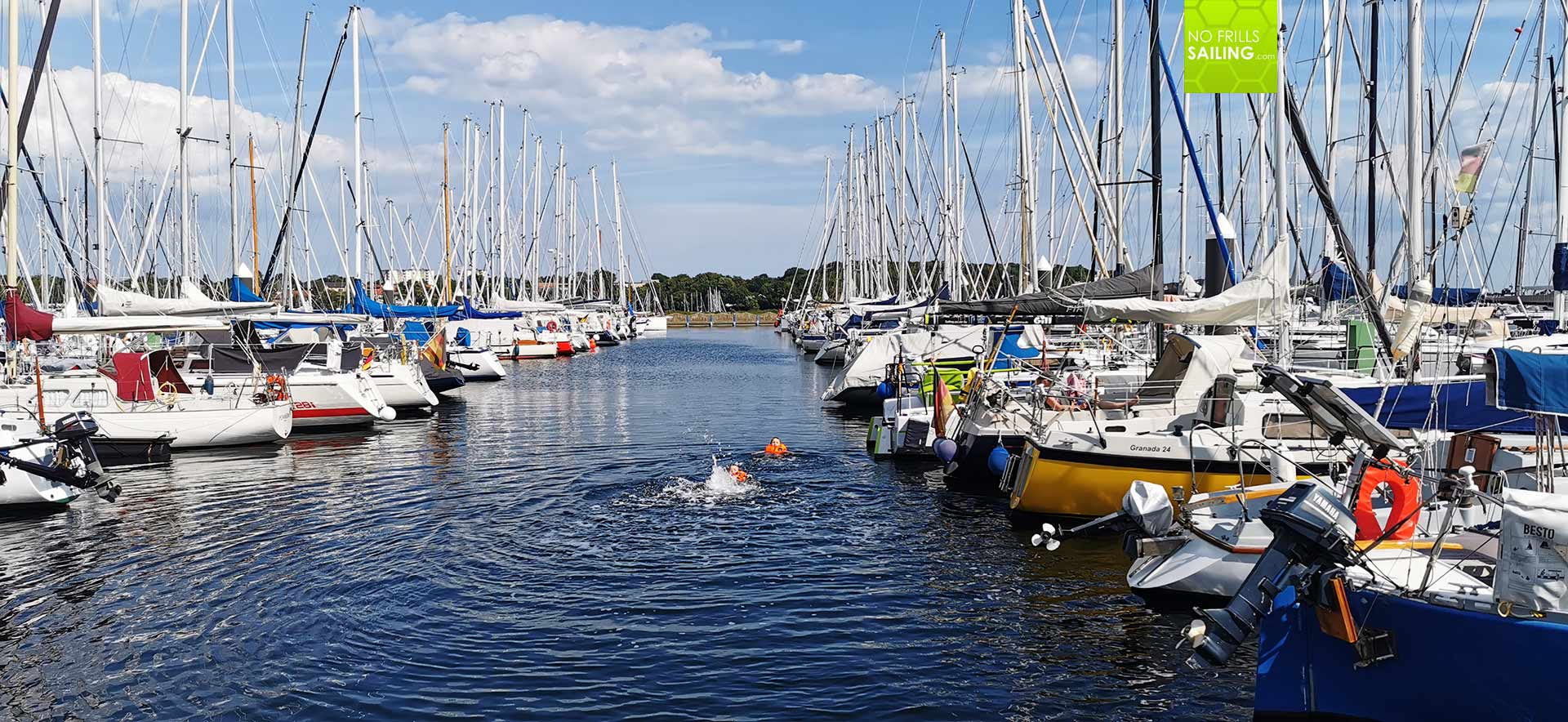
I have the kids sailing under same conditions as we adults do: Wearing a life jacket plus a harness, that´s all. There is nothing that makes them feel small or inferior. We also do have two simple rules: When underway, life jacket and harness are to be worn (first) and second, nobody is behind the mainsheet traveller. That´s it. I treat them like proper parts of the crew, my small one for example learned the different switches of the main board and he has to turn on/off instruments. Both have a children´s logbook and my elder son is more and more trained to work the docking lines: He take over more tasks when I land the boat and tie her up. Now, back to the life jackets. First I displayed and trained them to see the difference between the life vests and life jackets. Latter for serious sailing, the vests for jumping around in the marina. Second was to let them feel how a life jacket (vest) works by having them taking a small dash to the seas near the boat, tied up to me on a little rope. Now, step 3 kicked in.
Step 3: Building up trust in their life saving equipment
That is: „The life jacket will carry your weight, no fear, no panic – if you fall into the water, the vest/jacket will bring you back to the surface and keep you there!” By that, I had them jumping off the pontoon wearing their life vests and just … have fun. It was a great occasion, they were screaming and yelling, excitingly jumping into the water time and again.
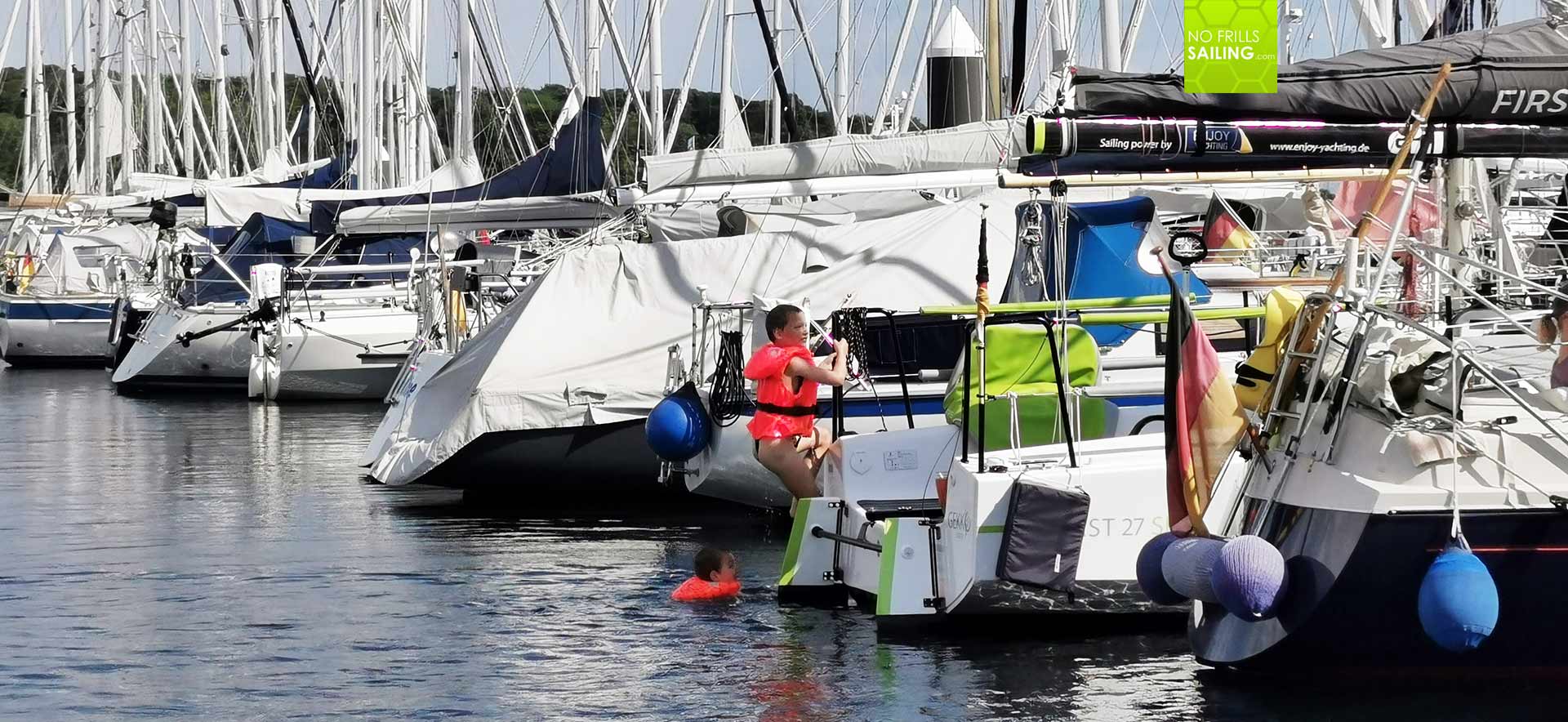
In this they learned by playing that – if they wear a vest – they would be floating. My kids learned to swim and passed the first two swimming tests this year, so of course they know how to swim without any floating device´s aid. But the idea was to build up trust in those vests and acceptance. To have them discover by fun and disguised in a little bathing play that those annoying vests they have to wear actually work pretty fine.
Learning through fun – not fear
Aboard, every time we leave, my kids receive a proper safety briefing. How to wear the life jacket, where to go and where not to go, how to be tied to the boat via harness and such. I always try to convey my messages in a serious and factual way. I never work with fear or anxiety. We speak about MOB or other possible consequences in an objective and hones way. No exaggerations, no threats and no horror-stories to make them do what I want. I am honest and factual. I let them take on responsibilities and assign certain (small though, but nevertheless real) tasks aboard to feel like a proper part of GEKKOs crew.
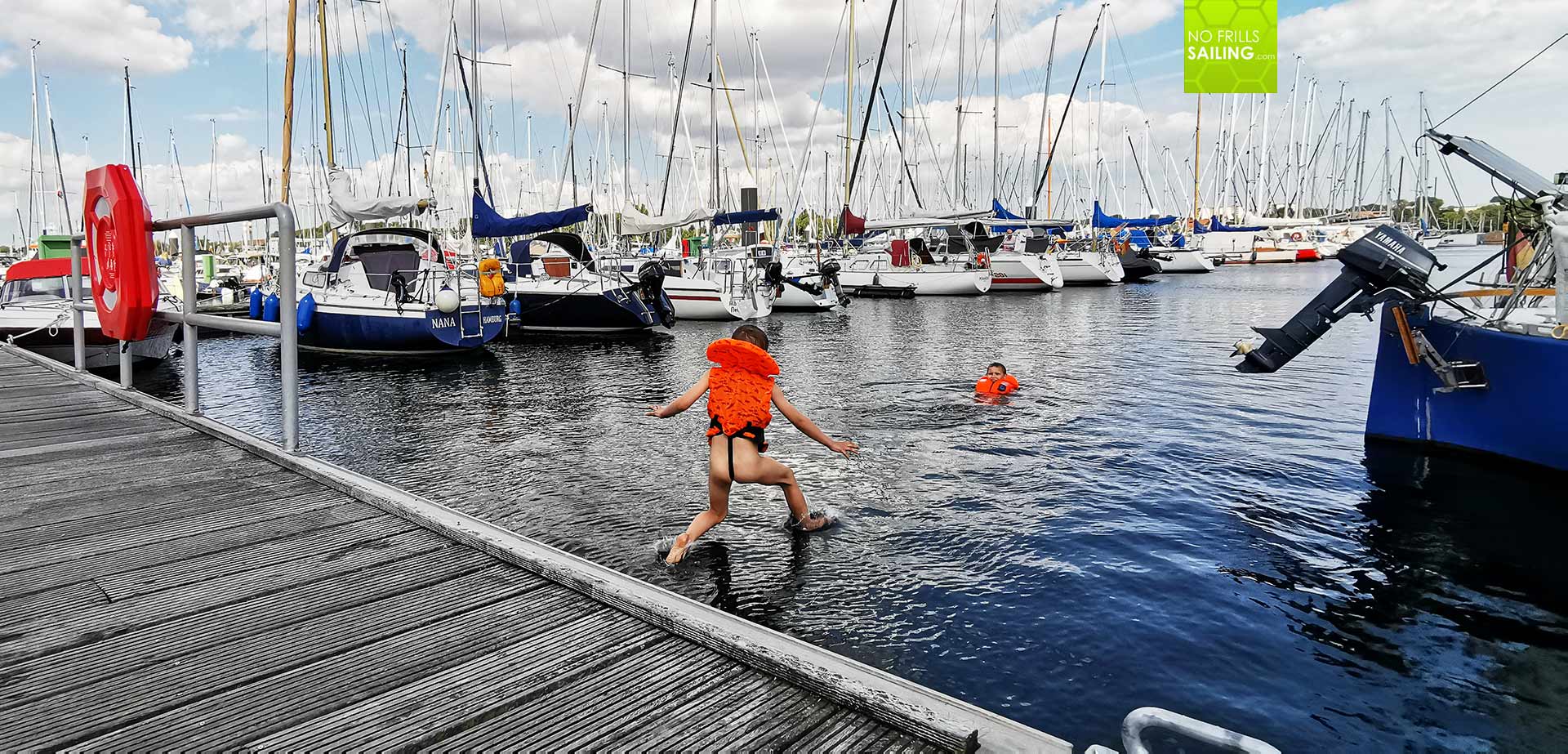
When I make them learn something, Itry to do it by fun and excitement. Watching my kids jump to the water and screaming out of joy was a pure delight. I also observed that their trust into the device grew by the minute: At first they did not jump but merely let themselves glide into the water, barely willing to let go of the pontoon. After the third trial they ran over the wooden pontoon and jumped as high as they could to plunge down with the biggest possible watery explosion. Trust grew. Powered by fun.
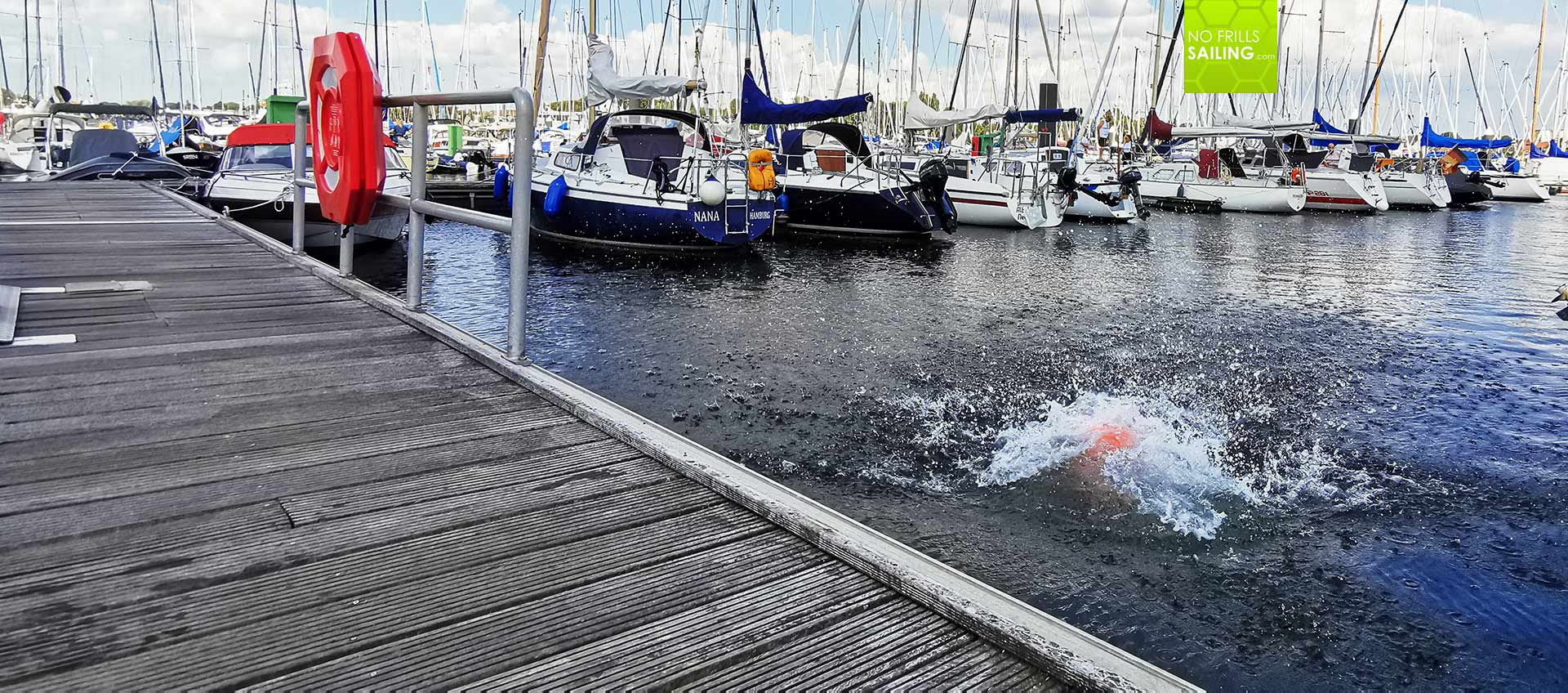
I provided them with a sense of achievement. Swimming back to the boat, climbing aboard via bathing ladder, all this gave them a feeling of success. It is quite a distance to swim from the pontoon to the berth of my boat, so both kids – along they way – also learned how to spot the boat and return to it. Learned how to swim wearing a vest and tried out different positions.
Let go – and let the kids take over (some) responsibility
After the two little seamen had been jumping into the water a dozen times or so and unlearned any mistrust, discarded any reservation against life jackets, I took the next step. They still being in the water, I asked to be quite and roll over onto their backs. Just let go. Just float. I said to them, standing at the stern of my boat while they floated near me, that we now„practiced“ a MOB situation.
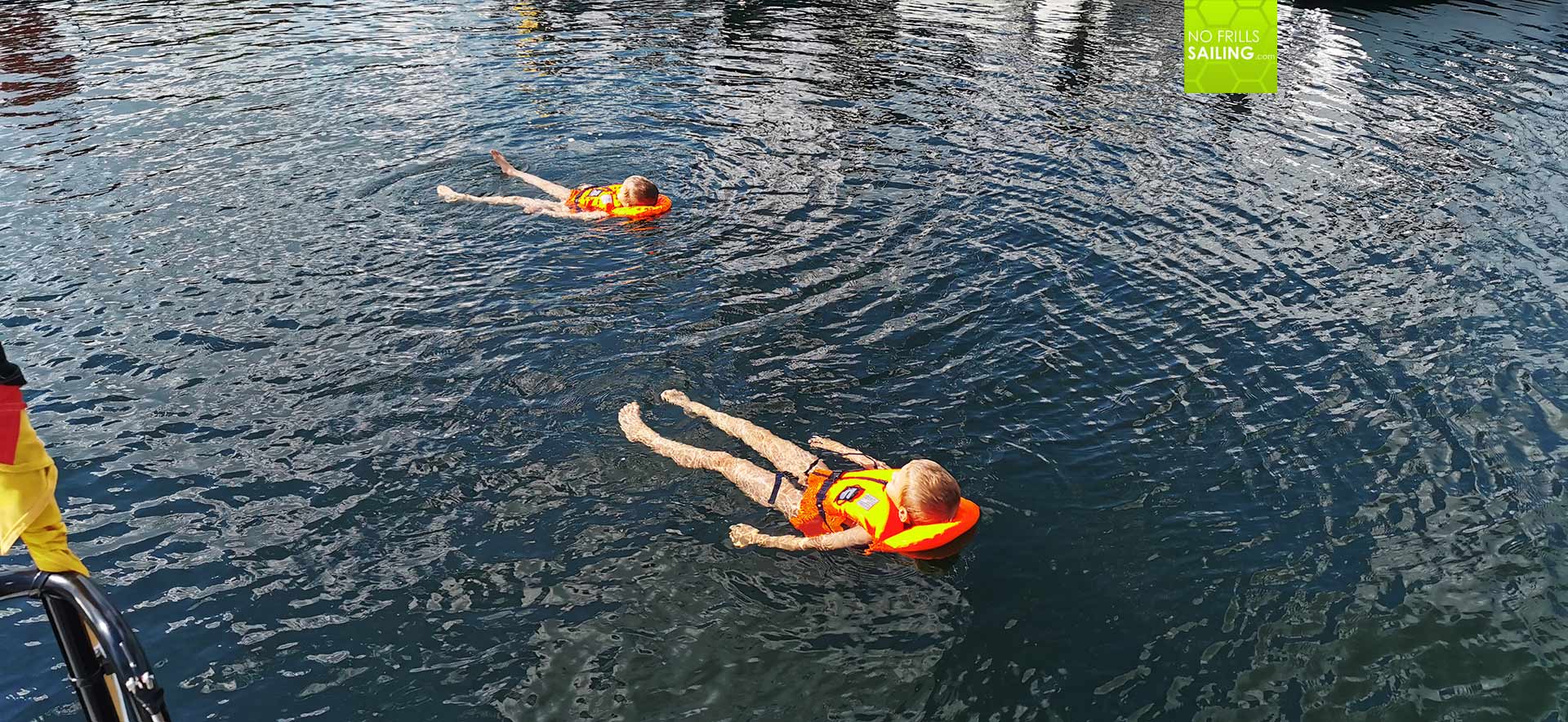
I told them that in any case, no matter why they fell over board and no matter who made a mistake, in any case, the vest will keep you guys afloat. They agreed, having tested it by their own the past hour intensively. “Now”, I said, “if you happen to find yourself in the water, it will feel like this – maybe a bit more waves, but essentially, like this. There are two big, big rules you have to keep in your heads … wanna know?” Of course my two little skippers wanted to know!
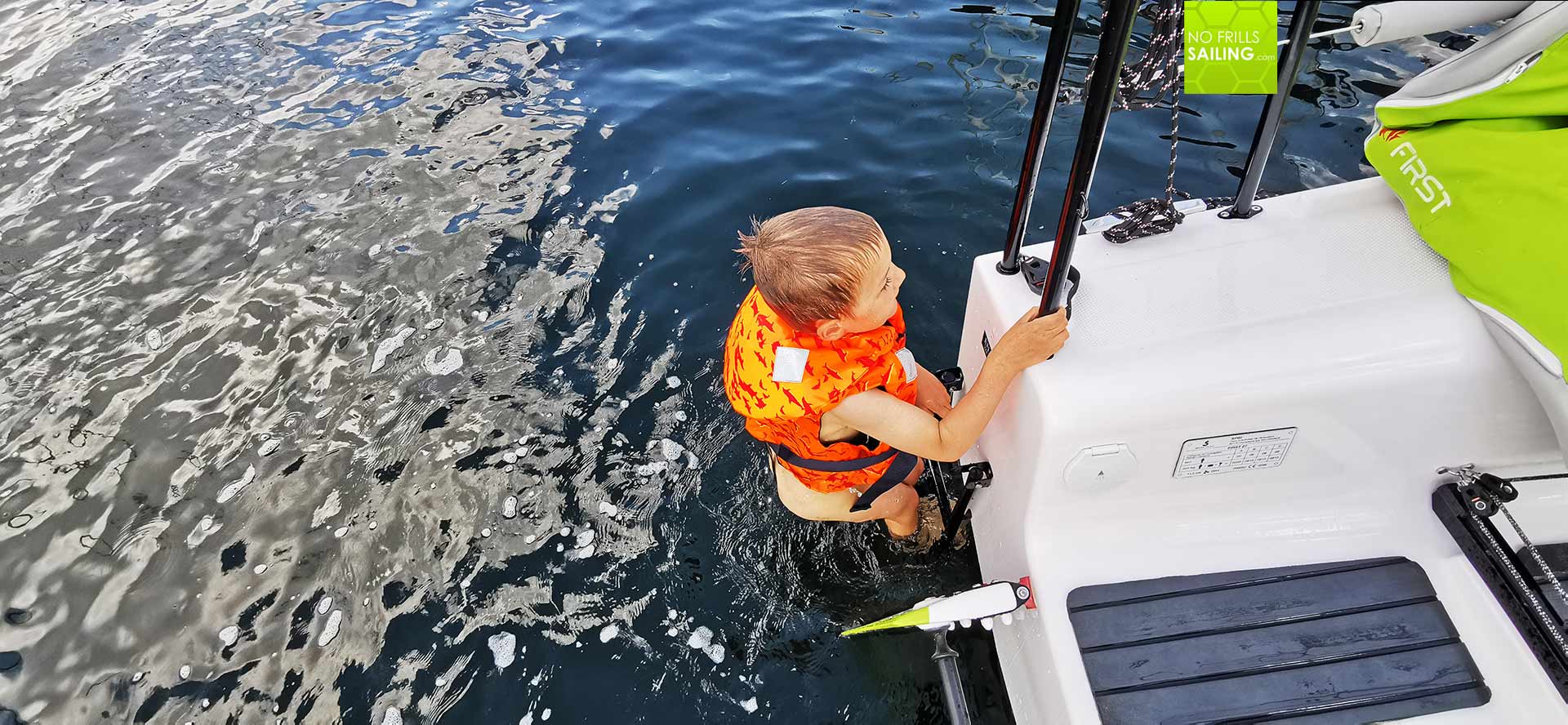
“First rule”, I said while my sons floated by, “is that you roll over into exactly this position you are in now. On your back – nose and mouth look up to the sky. By that we insure that you can breathe without getting water into your lungs and you will be stable in the water.” Both kids bent back even more, taking in some fresh air as to prove what I was telling them. “And secondly: No screaming or yelling and no waving. You tested it: It´s hard. It costs energy. But you rarely can´t be seen or even heard. Imagine a storm going on – wind is far too loud, your voices won´t be heard anyway. So save your energy, stay calm, just float and watch the sky.” Both nodded, remained for a while in their positions and returned to play mode quickly.
A sense of achievement, for both sides
This day was a big one. Up to now my training was more theoretical and provided little real action, let alone fun. As both re-boarded, took off their swimming devices and sat down, firmly rolled into a warm fluffy big blanket, they sat down in the sunny cockpit of GEKKO and babbled endlessly about how much fun it was and how exciting the jumping was. They summed up what they had learned automatically by themselves: “Daddy, now we know that the live jacket will keep us on the surface!” Lesson learned, kudos to the teacher …
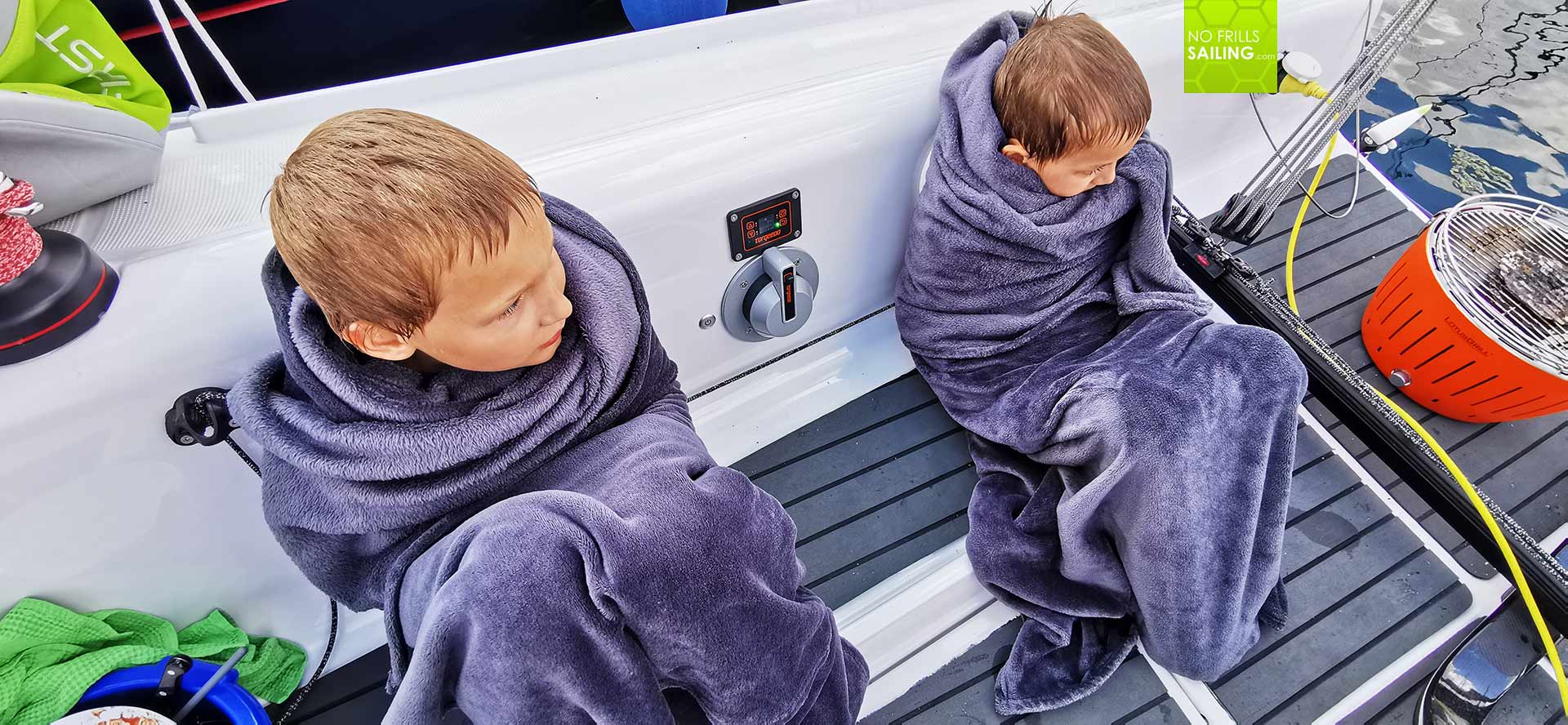
As a little reward I made them a hot chocolate, which they devoured with joy, and upon stowing away the live vest, we recapitulated the different points. Now, after training of having trust in the life jackets, the next level will be to leave the safe environment of the marina and go out. I will choose a calm day with pretty much no or low wind, seaward wind with no waves whatsoever and have them the splashing fun jumping from my boat. The idea is to transfer the fun we´ve had in the marina to the open sea, have them trust their equipment in open water, swim back to the boat in open water and take the next step in our safety training. How did my older son put it when I kissed them good night that day? He said: “It shouldn´t be called life jacket daddy … but rather fun jacket.” Well, I´d say this session did leave a big impression.
You might also like to read:
Sailing with Kids – all articles
A kid´s life jacket: How it is made
Kid´s drowing: Life saving techniques
